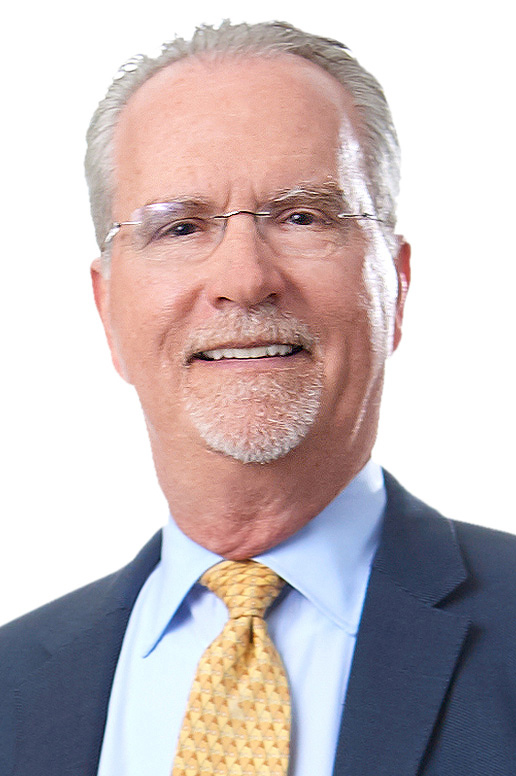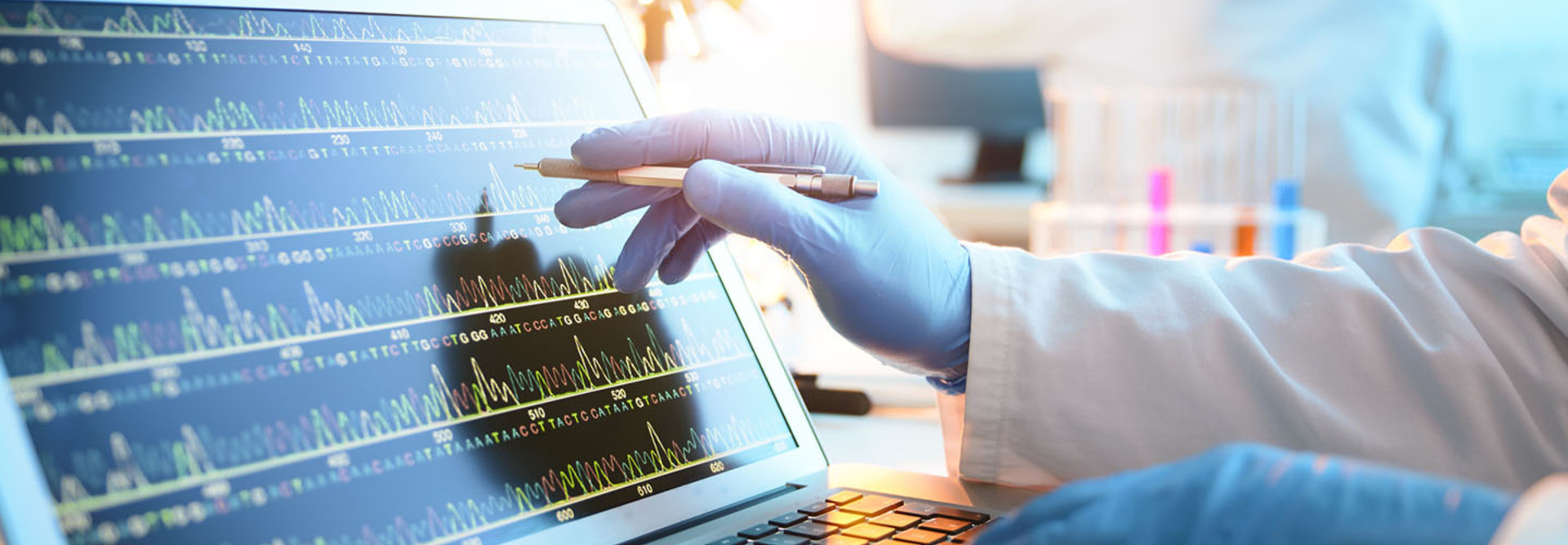Q&A: Geisinger’s David H. Ledbetter Strives to Make DNA Sequencing Routine
DNA sequencing requires an extensive amount of computing power and storage space. Health systems often lack the underlying infrastructure to undertake genomic testing regularly. But Geisinger Health, an integrated health system that serves more than 3 million residents in Pennsylvania and New Jersey, is looking to make DNA sequencing an everyday part of the clinician’s routine.

Dr. David H. Ledbetter, Geisinger’s executive vice president and chief scientific officer. Photo courtesy of Geisinger.
To do this, the health system first began a precision-medicine project known as the MyCode Community Health Initiative, in which it enrolled more than 200,000 patients in MyCode and reported a limited set of “medically actionable” results back to participants. Geisinger has now launched a pilot project to begin genomic sequencing as a routine part of the clinical experience to allow patients to receive reports on their risk of early cancers or heart disease before symptoms become present.
“Being able to offer such advanced medical information on patients allows them to improve their health and, in some cases, to avoid cancer or heart attacks,” says Dr. David H. Ledbetter, Geisinger’s executive vice president and chief scientific officer. “It's been so positive that we're ready to figure out how to continue and make it available eventually to all Geisinger patients and move it from a research framework to a routine clinical framework.”
HealthTech spoke with Ledbetter, who has a background in genetics and genomics and whose role at Geisinger is to oversee the research portfolio for the health system, to explore how healthcare organizations will be able to make DNA sequencing a part of this everyday clinical routine.
HEALTHTECH: How did the health system become involved in studying genomics?
LEDBETTER: I came to Geisinger seven years ago thinking that it's a large healthcare delivery system so it's able to do a variety of different kinds of research. But there are a number of reasons that it was well suited to do things in genomics and precision health, and that had to do with the electronic health record system having been implemented there in 1996 — earlier than most organizations.
HEALTHTECH: What type of data have you been able to gather on your patient population thanks to the EHR system?
LEDBETTER: We now have more than 20 years of longitudinal electronic health data on many of our patients, an average of about 14 years of retrospective longitudinal data, which is a remarkable data resource.
We’ve studied the unique aspects about the population in central and northeastern Pennsylvania and found that it's a very stable population, meaning the in- and out-migration rates are very low. For genetics and genomics, that means we typically have three-generation families living in the same area, so grandparents, parents and children still live close to each other. Since Geisinger is the predominant healthcare system, it's not uncommon that most people in the family are Geisinger patients and we have their longitudinal health information.
That combination of stable population, three-generation families and longitudinal electronic health information really creates an ideal infrastructure for adding genomics data to look at individual and family risks for particular diseases, with an initial focus on certain cancers and cardiovascular diseases and how these can result in early onset heart attacks.
HEALTHTECH: How was Geisinger able to gain valuable DNA sequencing on its patient population?
LEDBETTER: We started our biobank MyCode in 2007, before I arrived full time. But since my arrival in 2010, we recruited and built one of the largest genomics research teams in the world. In 2014, we partnered with Regeneron, a science-driven biopharmaceutical company in New York, to initiate large-scale DNA sequencing, which now has led to complete sequencing information on over 92,000 Geisinger patient participants. Soon we'll have another 35,000 sequenced.
In some cases, we would say it's a lifesaving intervention, by identifying cancer early, removing and treating the cancer based on the DNA sequence information.
HEALTHTECH: What will Geisinger's pilot project on DNA sequencing entail?
LEDBETTER: The pilot will probably go into some of our larger primary care clinics where the doctors are familiar with what we've been doing with MyCode, offering clinical sequencing to about 1,000 patients.
With MyCode, because of the way the research project is designed, only the 3 to 4 percent who have a positive result get an actual clinical report back. With the clinical sequencing, the other 96 percent will get a clinical report saying that we did DNA sequencing, we looked for disease-causing variants in a group of genes and we did not find anything at this time, but we will continue to update our analysis of the DNA sequence. We say that if we find anything that's relevant to their health in the future, we will get back in contact with the patient.
HEALTHTECH: How will MyCode work with the DNA sequencing pilot?
LEDBETTER: Our biobank MyCode has been ongoing as a research project for over 10 years. We ask patients for permission to use their electronic information for research. When physicians order blood drawn for clinical purposes, the patients give us permission to draw an extra tube that goes to the genomics core to isolate DNA and to do DNA sequencing and other genetic analysis.
In the last couple of years, we've identified over 550 research participants that have a clear disease-causing mutation important to their health. We've provided them with a clinical report, offered genetic counseling and partnered with the patient and their primary care doctor to discuss what they could do to reduce their health risks.
HEALTHTECH: What will it take to make DNA sequencing a part of everyday healthcare?
LEDBETTER: It needs to be cheaper. It's getting cheaper every year, but it’s still not cheap. It’s somewhere around $500 now if you do it at large scale and get all the discounts possible. That's still a lot of money when you're talking about a healthcare system population of 1 or 2 million people.
HEALTHTECH: What type of underlying infrastructure will be necessary to make DNA sequencing routine?
LEDBETTER: There'd be some issues with data storage. There aren't good standards yet about how much of the raw data versus the processed and filtered data you need to store.
A part of the pilot project and phased rollout of clinical sequencing is to explore logistical and infrastructure issues. In research mode, we've had access to cloud-based DNA sequence storage, and that comes with a cost, so we have to look at cost as well as privacy issues comparing local storage with cloud-based storage.
We also need to look into the logistics of how to implement this without disrupting other workflows and being too much of a time-burden on providers and clinicians.
HEALTHTECH: How will DNA sequencing fit into a physician’s everyday workflow?
LEDBETTER: Our hope is it turns out like any routine clinical screening test. It will be just like doing a lipid profile or other lab or screening test and won't be a significant burden. That's the goal.
HEALTHTECH: Looking to the future, where do you see DNA sequencing and precision health going?
LEDBETTER: The ideal future is that we do this kind of sequencing of all the genes earlier in life, and the ideal touchpoint is newborn screening. We already have a DNA sample on every baby born in the United States, and that sample has plenty of DNA to sequence the entire genome. Then we could keep that on file throughout the individual’s lifespan and consult with the genome at any time to choose the optimal drug and treatment for diseases in which that patient has an increased risk. We could use that information to take measures to reduce those risks.
We're learning right now primarily on adults, but long term, I'm interested in what we can do looking at prevention from early in life, starting at birth.









